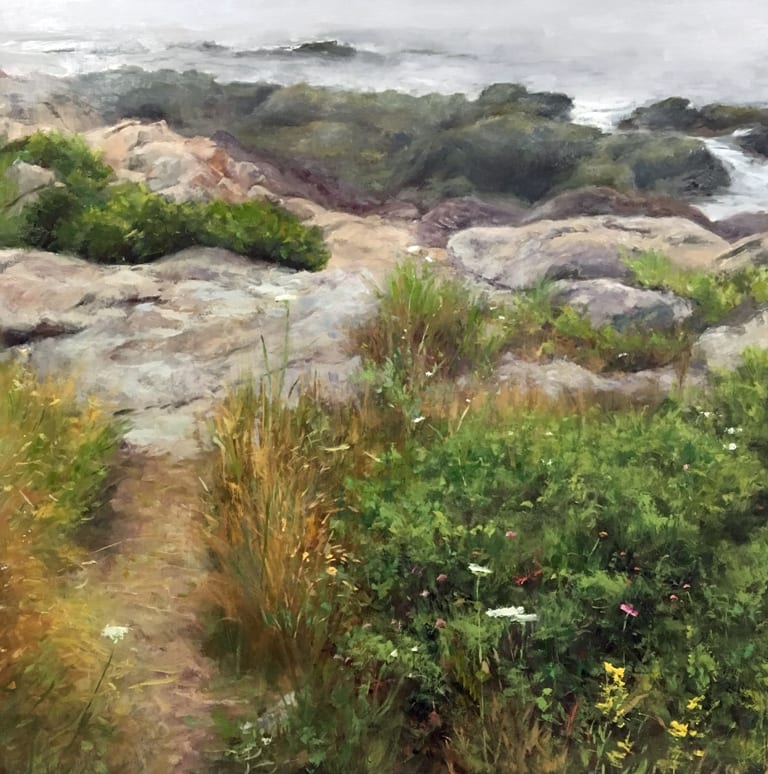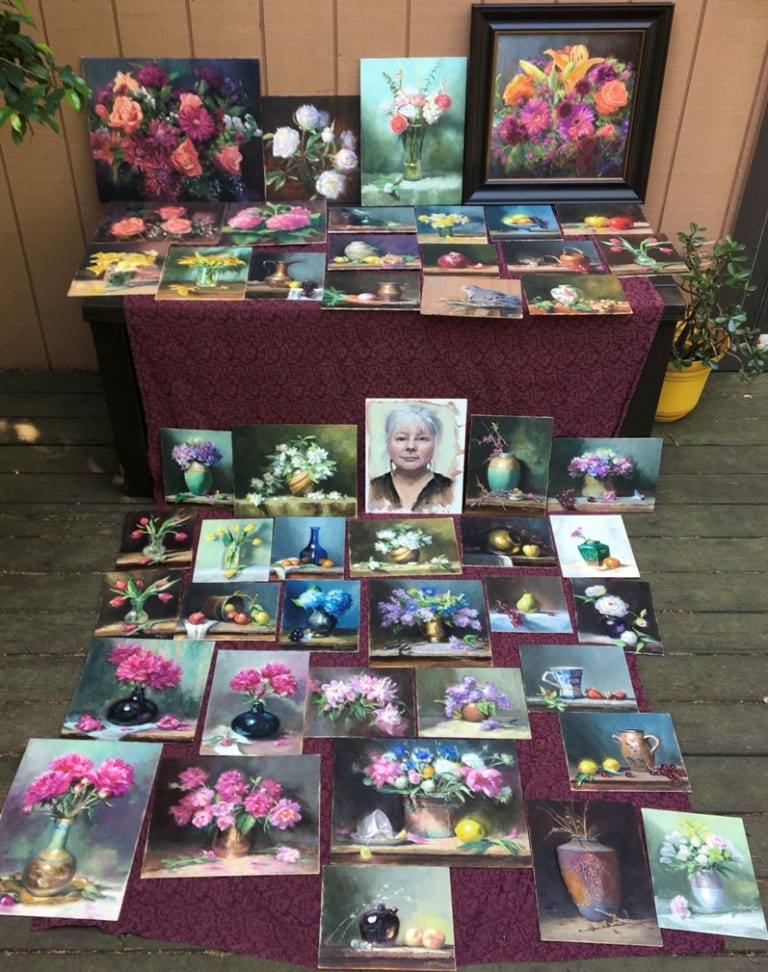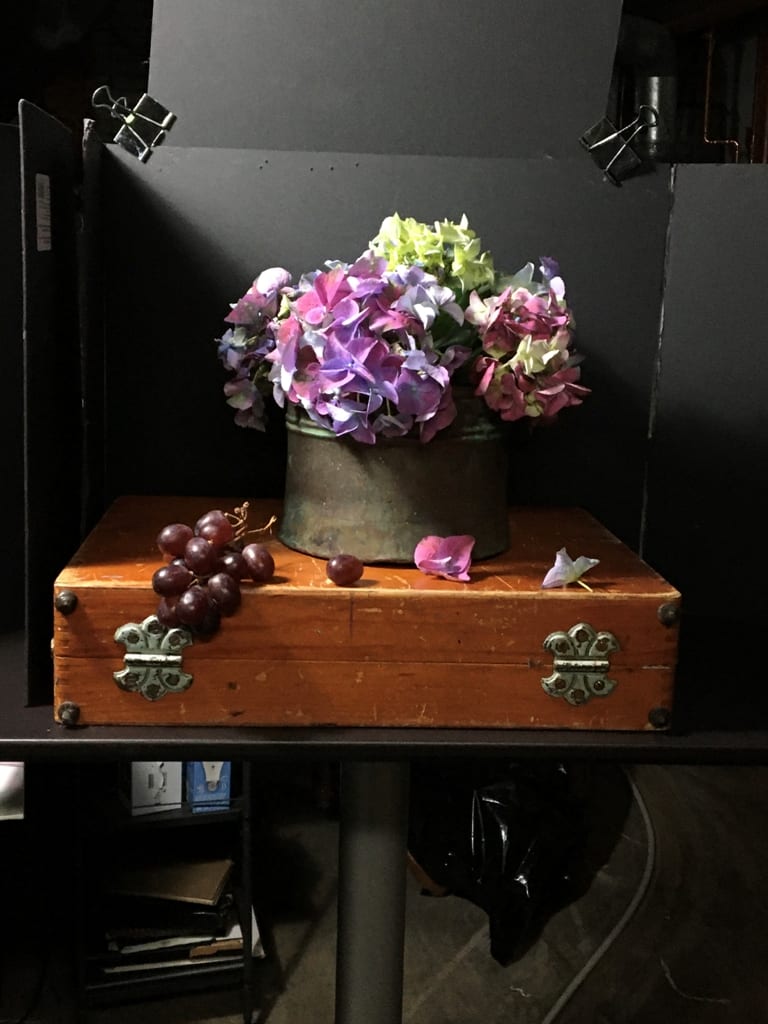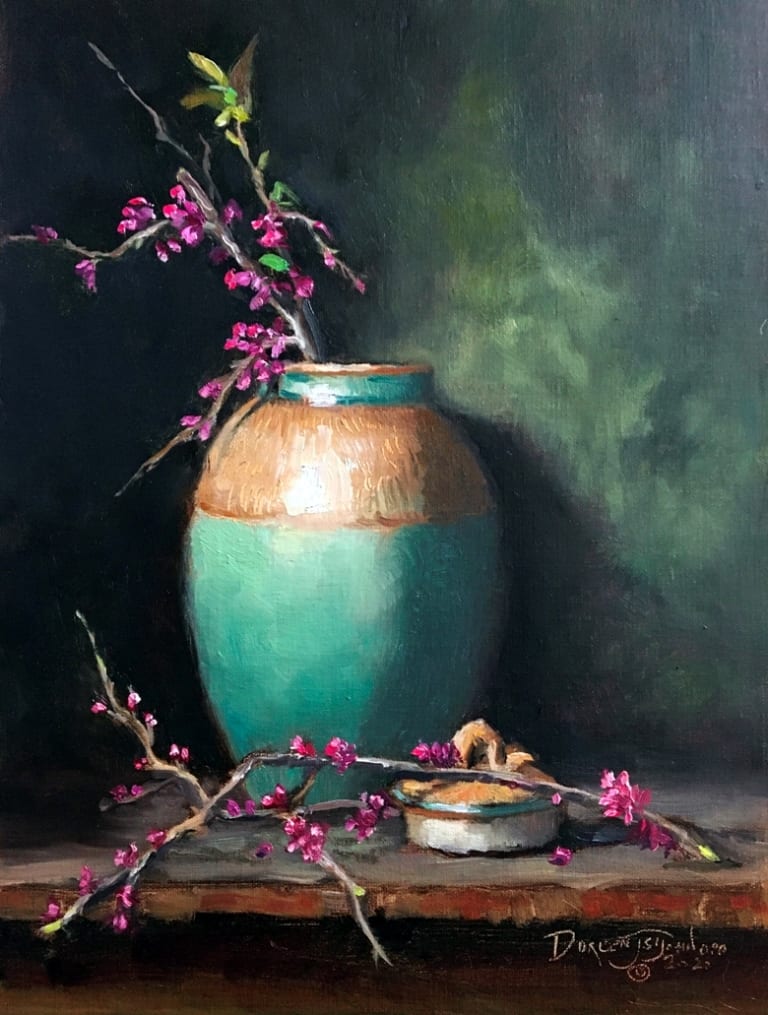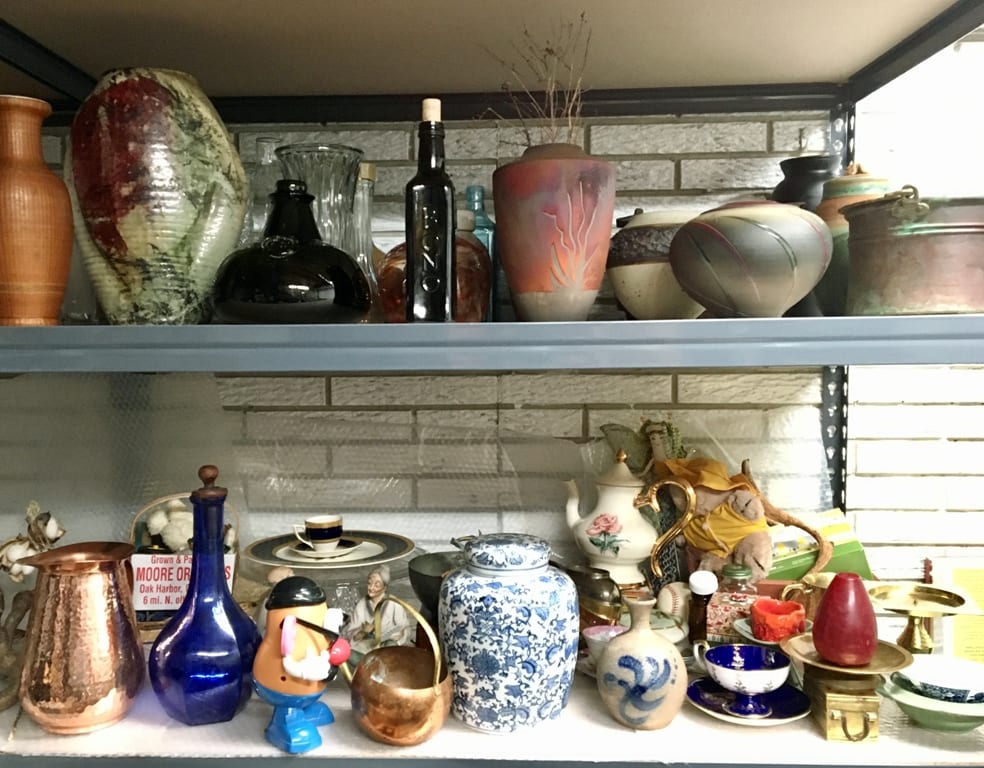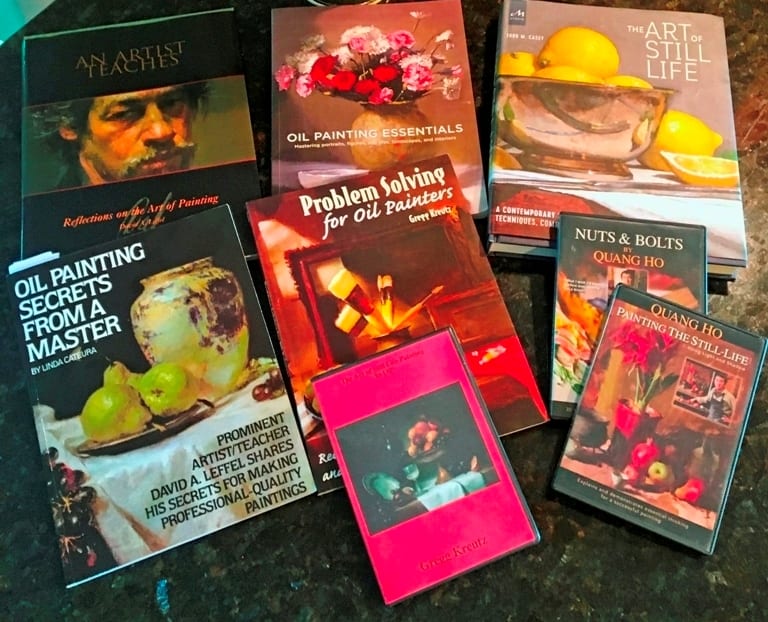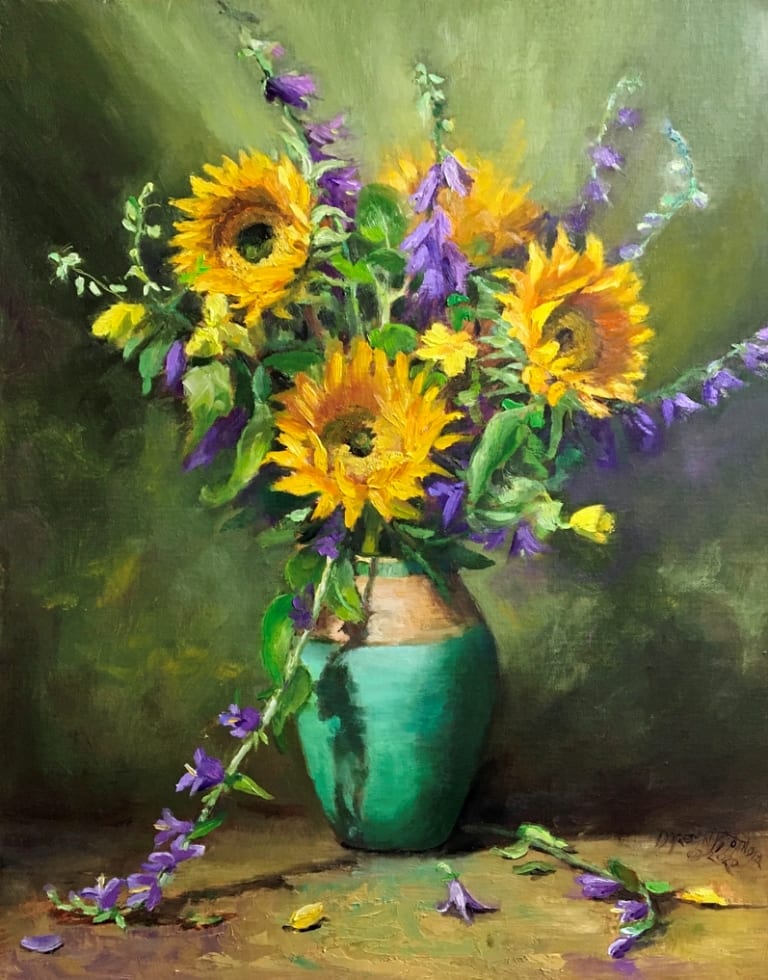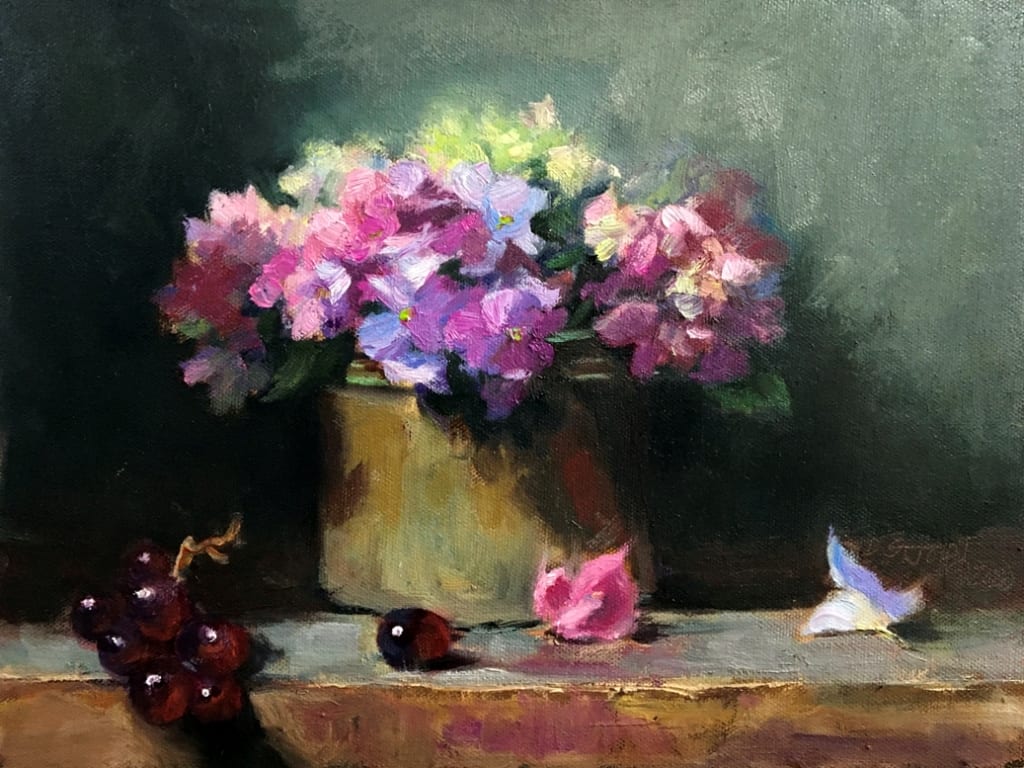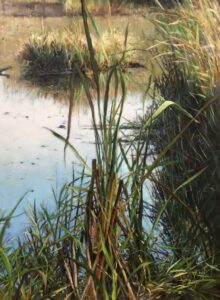About five years ago, I wrote this blog for OPA. I’ve been asked to share it again, along with any potential new insights. There have been some major life stressors over those five years, both personal and global, but I find that most of what was in the original blog is still valid. I hope you find something here that inspires you!
At various times in my life, I’ve struggled with artist’s block…those times when your spirit wants to paint, but obstacles keep getting in the way. For me, it’s usually accompanied by frustration. I am sure many of you have struggled with this, to varying degrees…when the demands of time, family, obligations, health, or other issues interfere with the creative process. Sometimes it’s just a short hiatus, and at other times it seems to go on endlessly. There are many great articles on the web for dealing with this, but I decided to share some of my personal strategies that have worked for me. I hope they may help you as well.
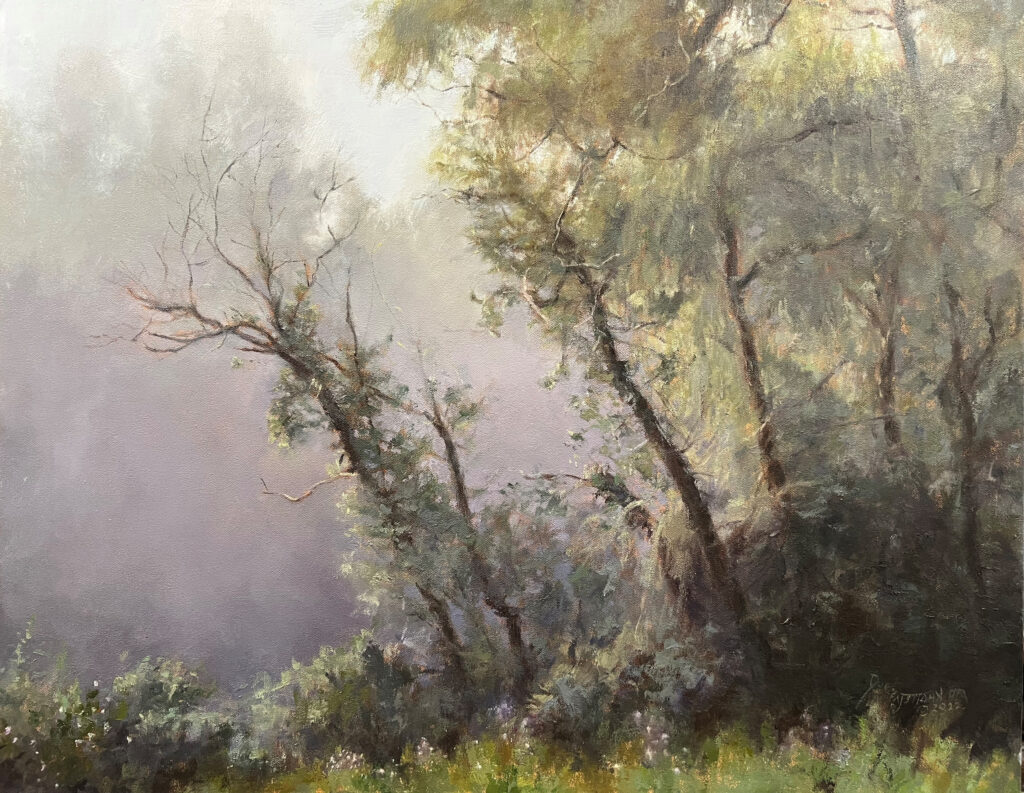
22″ x 28″ – Oil
Figure out the source of your block
Try to figure out the source of your block – health, financial and/or personal problems, loss, stress, fear of failure or fear of success, anger, time management, procrastination – and do your best to eliminate those problems. If you are like many of us, you may have several obstacles, so pick the biggest one and start working on that. If you are feeling overwhelmed, don’t hesitate to get professional help from an art therapist or licensed counselor. These professionals are trained to help us get past those difficult times when nothing else works.
Decide what is most important
I had to decide what was most important in my life, and all my energy had to go toward those areas. I had to learn how to say ‘no’ to the things that were unimportant and focus on the important stuff. For me, it’s God, Family and Friends, Art, and Service; sometimes other things creep onto the list, and that is fine. When I was working at a day job, career had to go in that equation. The order sometimes changes, but for me it’s still the same core list. One of my best experiences in learning about this was from an old boss who made all her staff write a personal vision and mission statement. I couldn’t believe how difficult…yet valuable…that was.
One thing I learned is that art and life are inseparable. Robert Henri said, “Life is Art; Art is Life”, and I have seen this over and over again. My mark making is the sum of who I am as a person. Even when I’m not in the studio, I’m seeing things that are painting subjects and mentally putting them into a painting. As an artist, we are always composing, so the next time you are in the studio those mental notes are probably entering into your decisions…even if you feel “blocked”, you are still an artist.
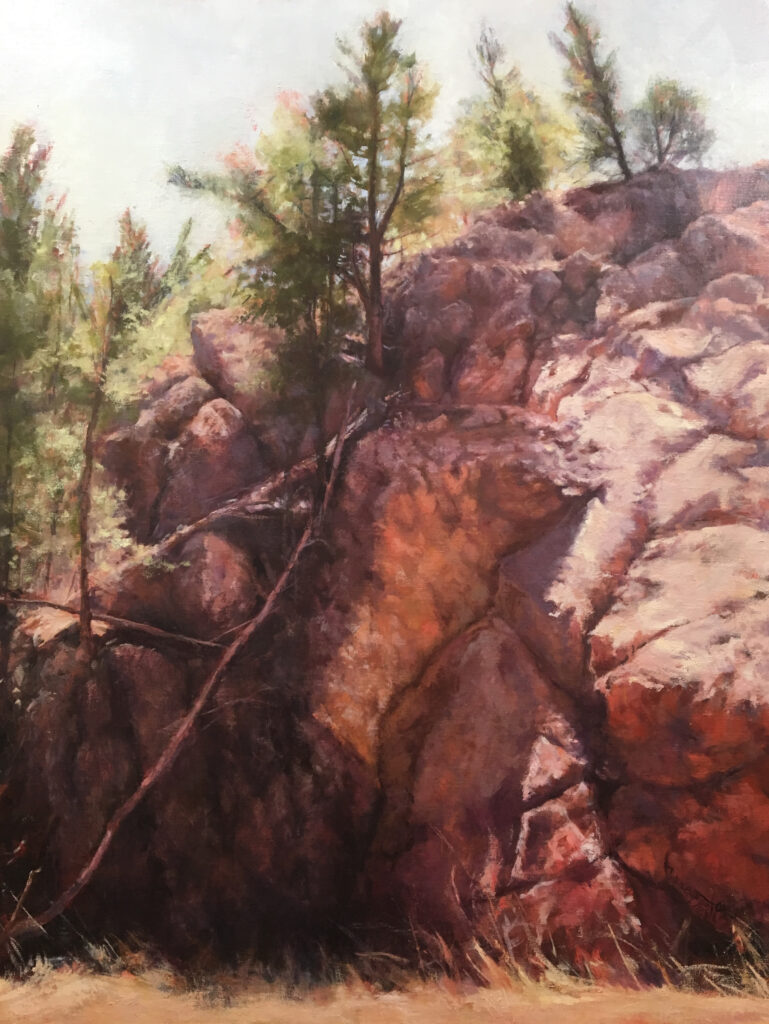
28″ x 22″ – Oil
Make a commitment and don’t give up
Once you know what the problem is, make a commitment to yourself. Make a commitment to change. Even though we all agree we need to change, change is difficult. To illustrate this, try crossing your arms in whatever way is comfortable for you…and then re-cross them in the opposite way. If you try it, you realize that a very simple change, even when you want to change, can be very difficult. Don’t give up! We are all imperfect humans, and life has a way of getting in the way and giving us unexpected challenges. I have several slogans that help me with this…like “pobody’s nerfect” and “slow and steady wins the race”. I used to read positive affirmations every day to focus on the positive rather than the negative. After a while, it became easier, but it’s easy to slip into negative thought patterns and give up if you aren’t aware of this. Newton’s Law of Inertia is a good one to keep in mind: “An object at rest will remain at rest unless acted on by an unbalanced force. An object in motion continues in motion with the same speed and in the same direction unless acted upon by an unbalanced force.” Once you get the positive energy going it’s easier to keep it going!
Time Management/Planning
Being more efficient with time is so important! When I look back on all I accomplished as a single parent, I can’t believe it, but I know part of the reason was that I was more efficient with my time. Make a plan and stick to it. Hire a babysitter for x amount of time each week so you can get into the studio. Get a small planner or use your cell phone and write down your studio time, or schedule plein air days with friends. There are more suggestions in the list below. The book, The Seven Habits of Highly Effective People, by Steven Covey, has a great model for learning how to do more planning and to decide what is most important, but there are many blogs on the internet that also deal with this. I follow Robert and Sara Genn’s online newsletter, “The Painter’s Keys”, and, coincidentally, today’s post was taken from Steven Covey’s book! Here is a link to the article: http://painterskeys.com/the-7-habits-of-highly-effective-artists/
Working on the Work
When I was in education, we talked about “working on the work”. It was one of those slogans that gets thrown around and becomes a catch phrase, but for me it has a deeper meaning. Life is about working on the work; creating is most definitely “working on the work”. For me, it means get into the studio, show up, and get to work. If you can’t work, then show up and clean, or organize…do something to work on the work. On a deeper level, “working on the work” means being immersed in your art, and that leads to new discoveries, new connections, and new understandings. You may have that painting where you got lost for hours but it seemed like only minutes had passed…you were working on a deeper level. So…work on the work, and your creative block may lift. Artist Chuck Close seems to echo this concept in this quote:
“The advice I like to give young artists, or really anybody who’ll listen to me, is not to wait around for inspiration. Inspiration is for amateurs; the rest of us just show up and get to work. If you wait around for the clouds to part and a bolt of lightning to strike you in the brain, you are not going to make an awful lot of work. All the best ideas come out of the process; they come out of the work itself. Things occur to you. If you’re sitting around trying to dream up a great art idea, you can sit there a long time before anything happens. But if you just get to work, something will occur to you and something else will occur to you and something else that you reject will push you in another direction. Inspiration is absolutely unnecessary and somehow deceptive. You feel like you need this great idea before you can get down to work, and I find that’s almost never the case.”
– Chuck Close
Strategies to help get out of a creative block/slump:
Finally, I have a list of strategies that I sometimes use if the creative muse isn’t showing up. You may have your own list; feel free to share!
- Exercise or take a walk in nature. Movement helps to reduce stress and stress can interfere with creativity.
- Practice positivity; read positive affirmations.
- Join an art group that meets regularly. I joined a plein air group that met once a month because my time to paint was so limited. That experience is what got me back into painting. Painting from life in the outdoors and the camaraderie of being around other artists was just what I needed, and it reaffirmed to me that I was still an artist.
- Focus more on the process of creating, rather than the product. It helps me to say, “It’s just canvas and paint”.
- Attend an art show or opening. Being among other creative people can energize you and get your own creative juices flowing.
- Keep a sketchbook and pencil close by and sketch anything…even your house plant, or your sleeping cat! Drawing skills need to be constantly exercised, too.
- Take a workshop from someone you admire, or watch an instructional art video.
- Read a great book by your favorite artist, a biography of someone who has achieved great success while overcoming obstacles, or read a personal growth book. You may be surprised to learn that creative blocks are often not about art, but about other areas in your life. One of my favorite books, “The War of Art” by Stephen Pressfield, is a wonderful book and a quick read. I’ve suggested several others that helped me at the end of this blog.
- Experiment with a new product, medium, or method. You can get some amazing ‘aha’ moments when you try something new. Trying pastels has led to new growth in painting in oils. Buy some new art supplies…I call it “art store retail therapy”!
- Find a way to make yourself accountable. Some ideas: schedule an event or volunteer to give a demo; have a weekly goal and keep track of how you are doing; schedule art time in a planner – even 30 minutes can help get me over a hump. Having an obligation helps to motivate. Be honest with yourself.
- Decide to enter a show and create a plan on how you will have work ready.
- Print out your favorite photos and put them in a file for the next time you need inspiration.
- Talk to an artist friend for motivation; go out painting together.
- Volunteer your time. Being around others and giving back is a great way to boost your mood, especially if your block is related to a loss.
- Show up in the studio, even if it’s only to clean or organize.
- Quit making excuses. Just paint.
Some books that have helped me with creative blocks/growth:
The War of Art by Steven Pressfield
Alla Prima II by Richard Schmid
Clear Seeing Place by Brian Rutenberg
Art is a Way of Knowing by Pat B. Allen
Feel the Fear and Do It Anyway by Susan Jeffers
The Four Agreements by Don Miguel Ruiz
The Road Less Traveled by M. Scott Peck
Shut Up, Stop Whining, and Get a Life by Larry Winget
The Seven Habits of Highly Effective People by Steven Covey
